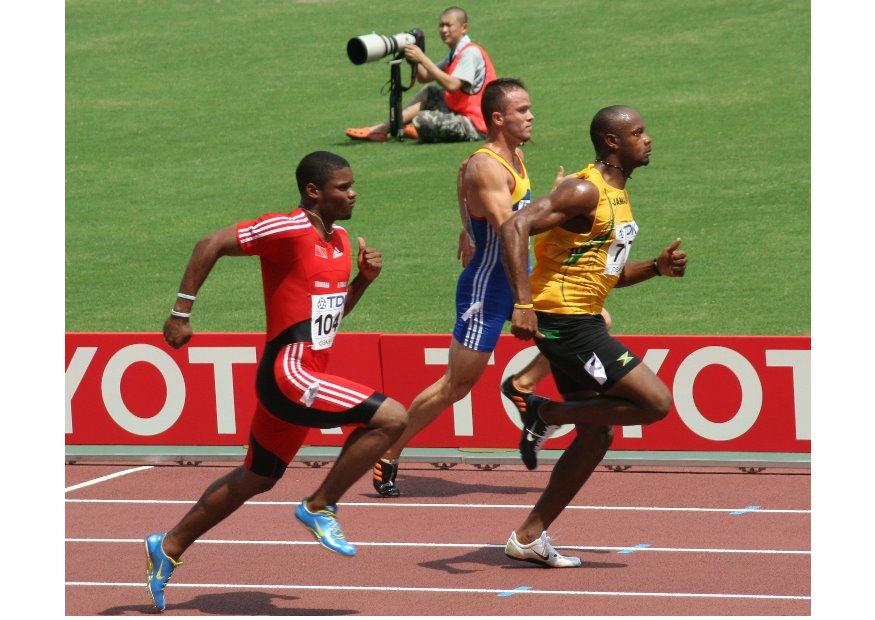Sprint running has long been divided into three phases: acceleration, maximum velocity, and speed endurance. The first two have been considered important for the training of most athletes. In acceleration running we’re increasing our velocity. Initially this is done via frontside mechanics (i.e. our focus is on lifting our knee, landing on a flat foot, and pushing ourselves along). Maximum velocity running is where we are taller and are focused on frontside and backside running mechanics. With backside mechanics we’re bringing our foot up behind us, keeping it tight to our hip to be able to cycle our leg faster, and then we focus on the frontside mechanics as the leg swings forward.
Yu et al conducted a study to look at the differences between acceleration and maximum velocity running. This study was designed to look at the biomechanics of both the acceleration and the maximum velocity phases of sprinting. To study that, the authors used twenty male sprinters (mean age almost 21 years old and best 100 meter performance was 10.94 seconds). Subjects ran maximum effort sprints with force platforms located 12 meters and 40 meters after the start. It’s unclear how many sprints the subjects ran during the study. In addition to force platform data, the sprints were also filmed with the subjects wearing reflective markers.
Results:
- Velocity was almost 20% greater at maximum velocity, compared with acceleration.
- Stride frequency was almost 4% greater at maximum velocity, compared with acceleration.
- Stride length was almost 13% greater at maximum velocity than acceleration.
- Peak horizontal propulsive force was 2% lower at maximum velocity than at acceleration.
- Peak horizontal braking force was almost 95% greater at maximum velocity than at acceleration.
- Peak vertical force was almost 20% greater at maximum velocity than at acceleration.
Most of these results are things that you’d expect to see. Stride length and frequency increase as the speed increases, velocity increases as the sprinter moves from acceleration to maximum velocity. The force information is interesting though. The horizontal propulsive force peaked during the acceleration stage. The horizontal braking force increased and peaked during the maximum velocity stage. In other words, the inability to limit the braking forces may limit maximum velocity.
How do we minimize braking forces? Several ways. First, we need to have an active footstrike. This means that at maximum velocity we’re looking at a pawing motion, so we need to avoid heel-to-toe footstrike patterns. Second, we need to limit overstriding. Overstriding will increase those braking forces. Best way to look at this is to make sure that the athlete is not leaning backwards while running, this is a great indication of overstriding. Finally, we need to be maintaining posture during the stance phase, in other words the athlete should be tall with limited knee flexion while in stance. This is done by strengthening the athlete.
Yu, J., Sun, Y., Yang, C., Wang, D., Yin, K., Herzog, W., and Liu, Y. (2016). Biomechanical insights into differences between the mid-acceleration and maximum velocity phases of sprinting. Journal of Strength and Conditioning Research, 30(7), 1906-19016.

